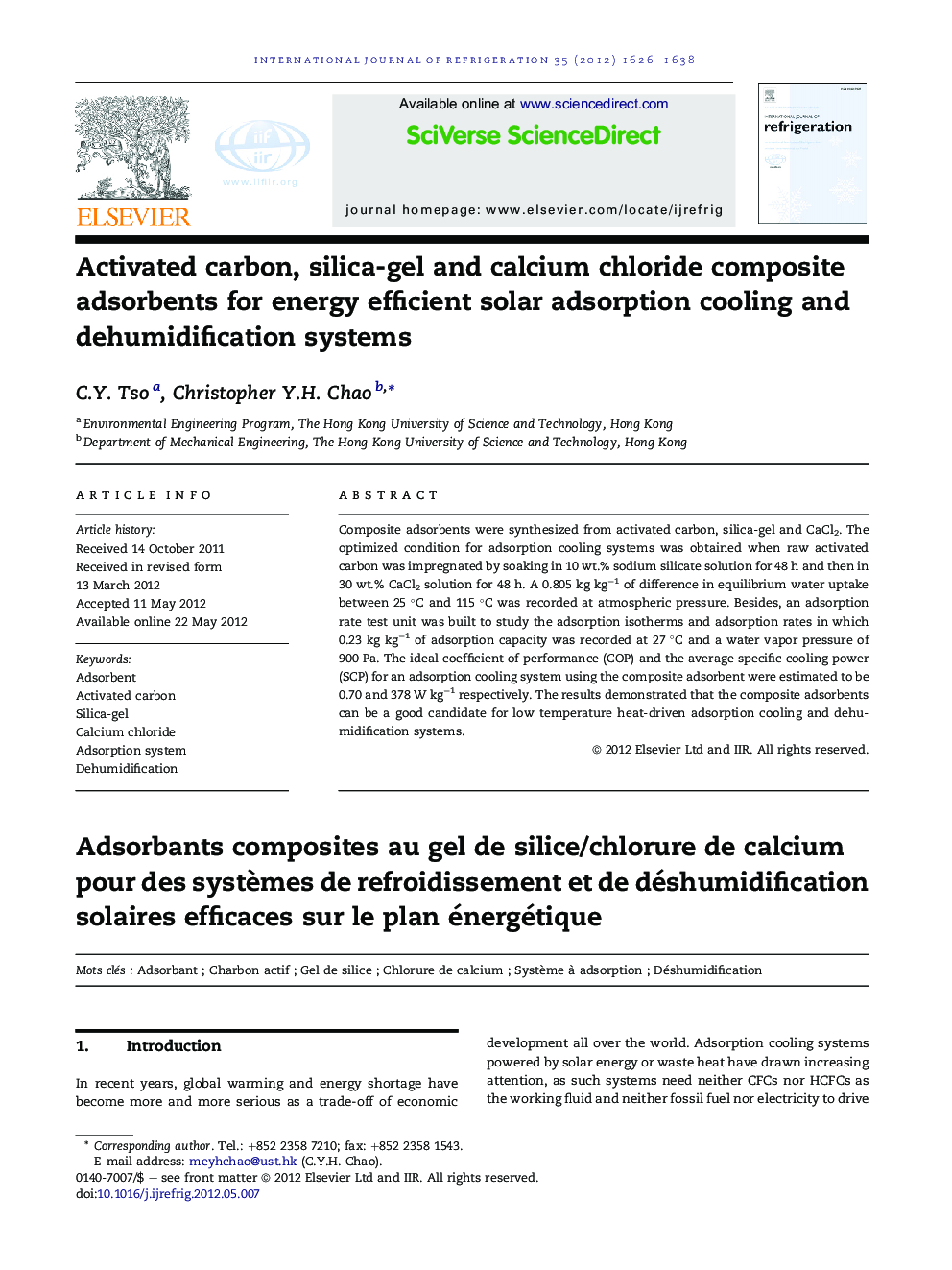| Article ID | Journal | Published Year | Pages | File Type |
|---|---|---|---|---|
| 789491 | International Journal of Refrigeration | 2012 | 13 Pages |
Composite adsorbents were synthesized from activated carbon, silica-gel and CaCl2. The optimized condition for adsorption cooling systems was obtained when raw activated carbon was impregnated by soaking in 10 wt.% sodium silicate solution for 48 h and then in 30 wt.% CaCl2 solution for 48 h. A 0.805 kg kg−1 of difference in equilibrium water uptake between 25 °C and 115 °C was recorded at atmospheric pressure. Besides, an adsorption rate test unit was built to study the adsorption isotherms and adsorption rates in which 0.23 kg kg−1 of adsorption capacity was recorded at 27 °C and a water vapor pressure of 900 Pa. The ideal coefficient of performance (COP) and the average specific cooling power (SCP) for an adsorption cooling system using the composite adsorbent were estimated to be 0.70 and 378 W kg−1 respectively. The results demonstrated that the composite adsorbents can be a good candidate for low temperature heat-driven adsorption cooling and dehumidification systems.
► Composite adsorbents were synthesized from activated carbon, silica-gel and CaCl2. ► A 0.805 g g−1 of difference in equilibrium water uptake was recorded at atmospheric pressure, showing a 324% improvement. ► 0.23 g g−1 of adsorption capacity and 1.3 × 10−3 of adsorption rate coefficient were recorded at low pressure condition. ► The ideal coefficient of performance (COP) and the average specific cooling power (SCP) for an adsorption cooling system were estimated to be 0.70 and 378 W kg−1 respectively.
